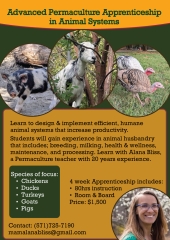 Source: amazon.com
Source: amazon.com
Published by Chelsea Green Publishing
Summary
Growing Green: Animal-Free Organic Techniques is an essential guide about organic growing and is perfect for absolute beginners as well as experienced professionals. This book introduces the concept of stockfree-organic and shows, through case studies, that when growers abandon the use of slaughterhouse by-products and manures they can be rewarded with healthier crops, less weeds, pests and diseases.
In an age where dreams of self-sufficiency seem unattainable,
Growing Green shows that making a living from growing organic vegetables can be achieved by anyone who is willing to rent land. Until now there have been no comprehensive guidelines on how to follow the organic standards at the different scales of vegetable production using tractors, small machinery and hand tools. This practical and easy-to-follow guide answers:
What tools and machinery will I need?What are the benefits of compost?How do I manage different green manures?Can I make seed compost without slaughterhouse by-products?What rotations should I use for year-round vegetable supply?How do I grow, harvest and store 60 different vegetables?How can I weed without chemicals?How can I reduce pest and diseases?How can I encourage wildlife?Where should I sell my produce?How can I ensure that I am reducing my ecological footprint?
An invaluable guide for the grower, researcher and student; this book will prove to be an important step forward for the organic movement.
Where to get it?
amazon.com
amazon.co.uk
amazon.ca
Related Videos
Related Podcasts
https://permies.com/t/19731/permaculture-podcast/Podcast-Helen-Atthowe-Compost-Veganic
Related Websites
Tolhurst Organic
Growing Green – with Iain Tolhurst
One Path to Veganic Permaculture
Vegan Organic Network





 5
5









 1
1








 2
2




 3
3




 2
2












